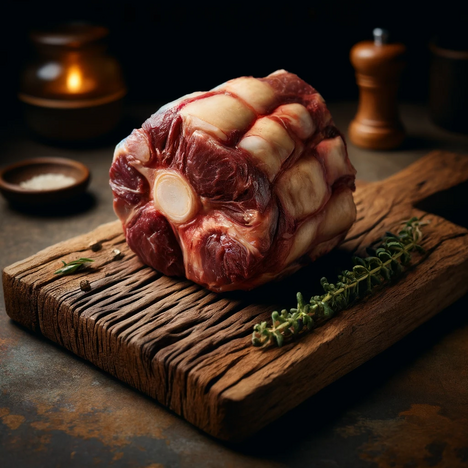Oxtail

Oxtail, often considered a delicacy in human cuisine, is also attracting attention in the world of dog nutrition. But is this meaty bone really a safe and nutritious snack for our four-legged friend? In this article, we explore what exactly oxtail is and take a closer look at the potential benefits and risks it can bring to dogs.
What is oxtail?
Oxtail refers to the tail of the ox, which is prized in the kitchen for its rich flavors and gelatin that is released during slow cooking. It consists of a high proportion of bone surrounded by meat and fat. While oxtail is usually stewed in the human diet or used as a base for hearty soups, it can also be offered raw or dried as a chew for dogs.
Benefits of oxtail for dogs
Dental health and chewing pleasure
Chewing on hard objects such as oxtail can contribute to dental health by helping to reduce plaque and tartar. The intense chewing also promotes the production of saliva, which in turn supports the growth of healthy bacteria in the mouth.
Nutrient richness
Oxtail is rich in protein and fat and can be a source of micronutrients such as iron and zinc. These nutrients are important for maintaining your dog's muscle mass, immune system and skin health.
Occupation and stress relief
Chewing on an oxtail can be a useful activity for dogs and can help reduce boredom and stress-related behaviors such as excessive barking or destroying objects.
Risks and disadvantages of oxtail for dogs
Risk of injury
Hard bones, including those in oxtail, can damage teeth or even lead to fractures. Caution is advised, especially for dogs with already weakened dental health.
Risk of choking and suffocation
There is a risk of dogs breaking off and swallowing large pieces of oxtail, which can lead to choking or intestinal obstruction. Such emergencies require immediate veterinary treatment.
Fat content
The high fat content in oxtail can cause gastrointestinal discomfort in some dogs and increase the risk of pancreatitis, especially in dogs prone to this condition.
Enjoy with caution
Oxtail can be a tasty and nutritious snack for dogs under certain conditions, but there are risks involved. It's important to consider your dog's size and chewing strength and monitor your dog's chewing to ensure safety. Start with small amounts to test tolerance. Ultimately, as with all treats, oxtail should be eaten in moderation and be part of a balanced diet tailored to your dog's individual needs.
If you notice any signs of hypersensitivity or poisoning in your dog, you should see your vet immediately. We are not a substitute for a vet, but we try to be as accurate as possible. Every dog reacts differently and we recommend you get a second opinion or consult your vet if in doubt.
Stay healthy and take good care of your four-legged friend!😊